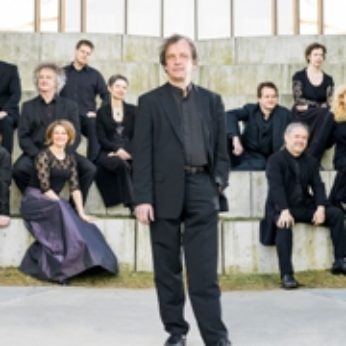Composer: Johann Sebastian Bach (b. 1685 - d. 1750)
Performance date: 05/07/2014
Venue: St. Brendan’s Church
Composition Year: 1730
Duration: 00:16:32
Recording Engineer: Damian Chennells, RTÉ lyric fm
Instrumentation Category:Small Mixed Ensemble
Instrumentation Other: S-solo, tpt, hpd, str
Artists:
Maria Keohane -
[soprano]
Sebastian Philpott -
[trumpet]
Concerto Copenhagen (Peter Spissky, Fredrik From, Antina Hugosson [violins], Torbjörn Köhl [viola], Kate Hearne [cello], Mattias Frostenson [bass], Fredrik Bock [archlute, guitar], Lars-Ulrik Mortensen [harpsichord, director]) -
[baroque ensemble]

This
Cantata for solo soprano was written for the 15th Sunday after
Trinity (August 28th this year). It was probably first heard on that
occasion in 1730 (17th September that year). However Bach
added: and for any occasion, indicating that he was happy for it be used
outside the strict religious calendar, an indication of its popularity; given
the superb quality of the composition it is a valuable Cantata for general
purposes. It is written for soprano,
trumpet and strings, a unique combination for Bach but popular among Italian
composers including Alessandro Scarlatti. The technical demands on soprano and
trumpet suggest that professional performers were employed with the soprano’s
part ranging two octaves and demanding a top C.
The text is not directly related to the readings allocated to that date
in the religious calendar and it is not known who wrote it. It involves lines from two Psalms and from
the Book of Lamentations and the chorale is a setting of a verse from a hymn by
Johann Gramm, a stanza Bach also used in the Cantata ‘Wir danken dir Gott’ BWV 29.
Bach
modelled this unique composition on the Italian motet style, comprising an
opening aria, a recitative, a second aria, a chorale and a final solo
coloratura Alleluja display. A sprightly trumpet tune launches the Cantata,
soon followed by the soprano with trumpet obbligato in a flamboyant setting Praise God in all lands. This is a da
capo aria, beginning with a lively and elaborate coloratura setting of Jauchetz Gott in allen Landen. This is
followed by a slower middle section Was
der Himmel, then the opening verse is repeated from the top. A recitative
is placed second: We pray at the temple where God’s glory lives…. Then comes a
slow-paced da capo aria Highest one, replenish thy goodness every
day…. The Gloria chorale leads
into the famous Alleluja, providing brilliantly-embellished vocal fireworks on
just the one word for the soprano, supported by fiery trumpet decorations.
Copyright © 2025 West Cork Music. All rights reserved.
Designed and developed by Matrix Internet